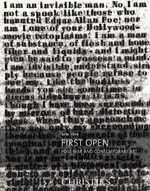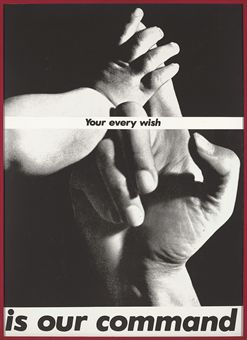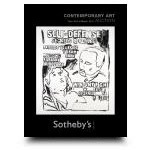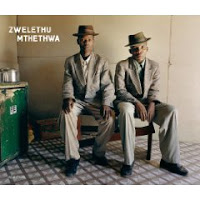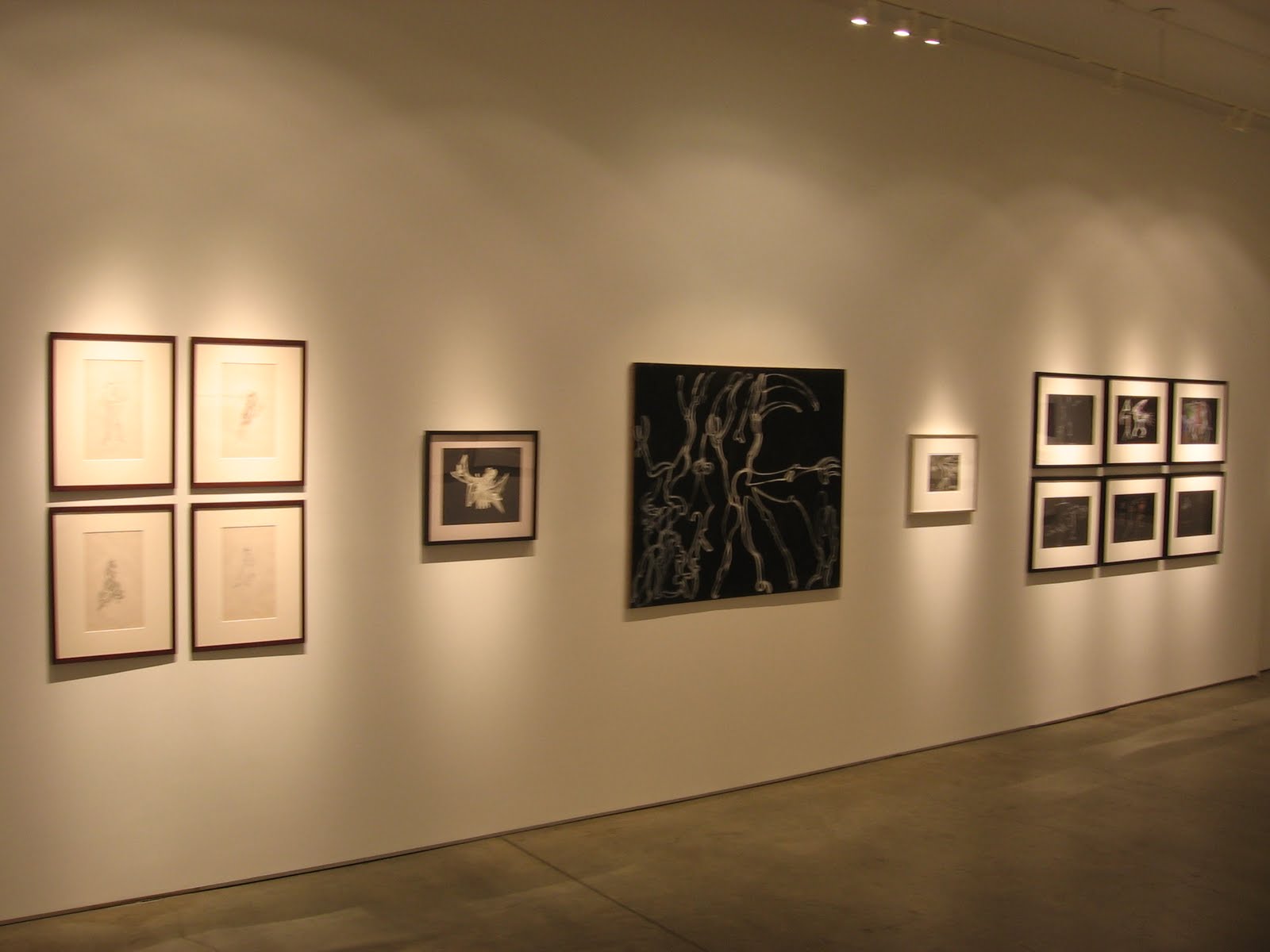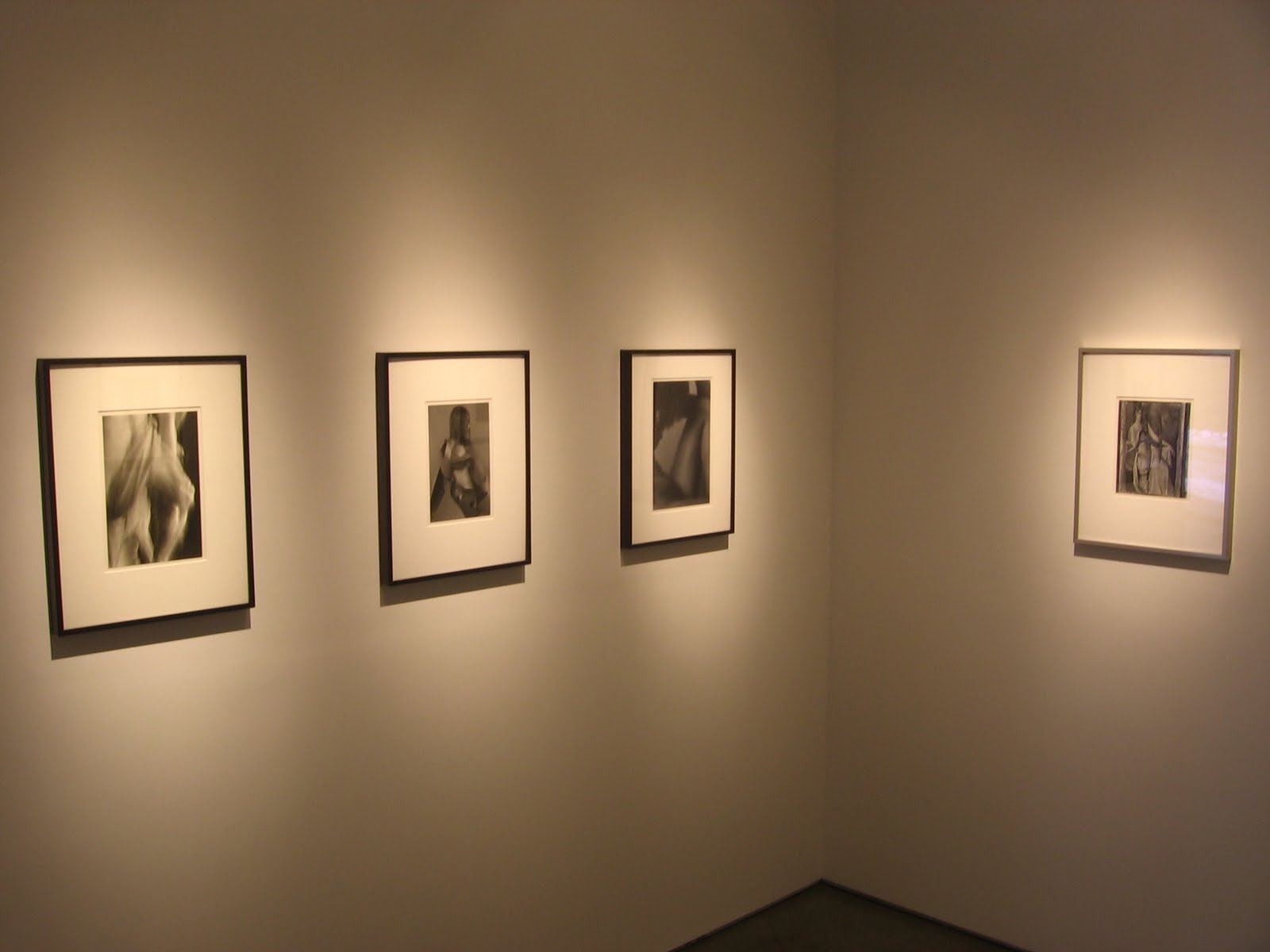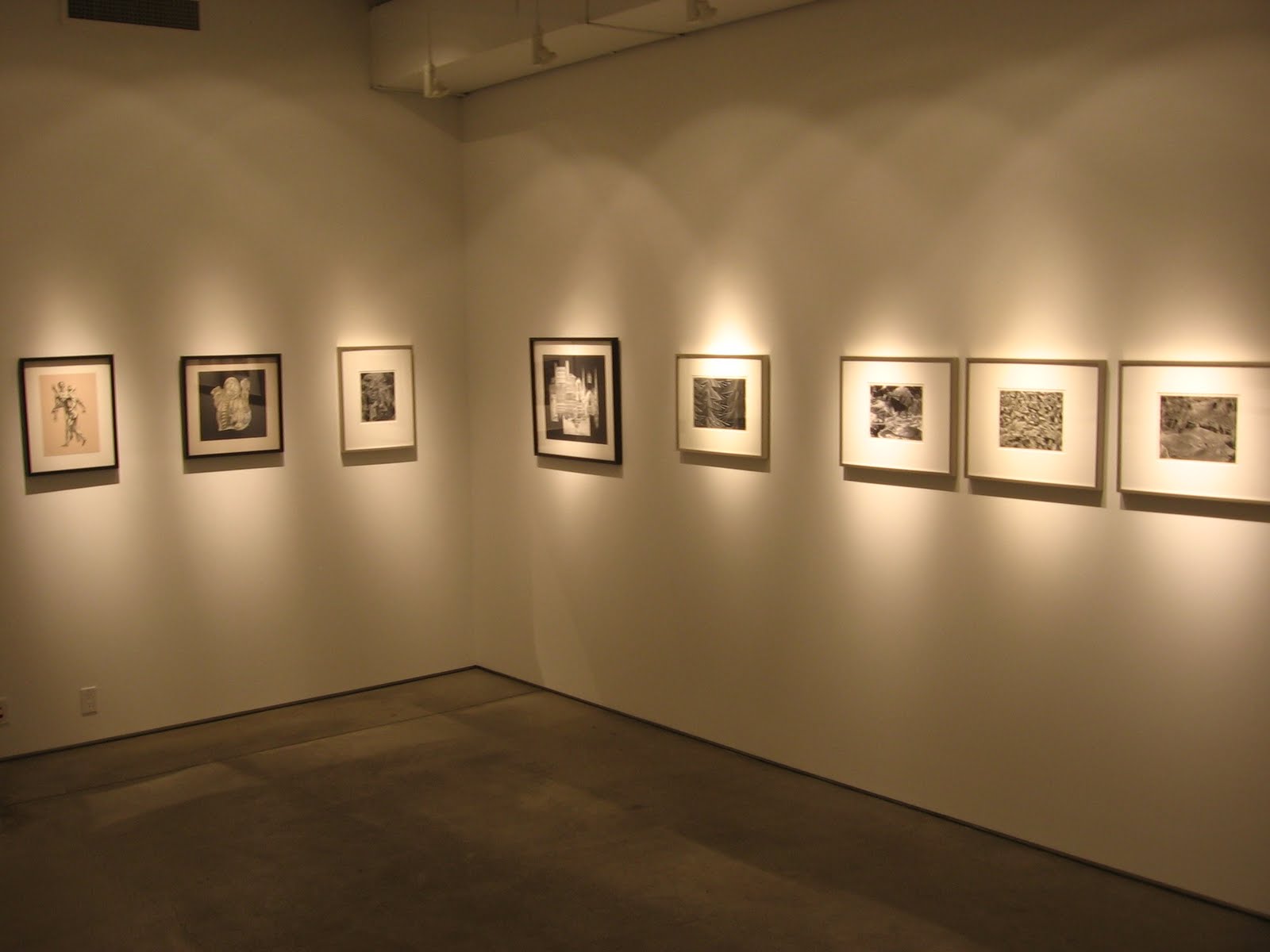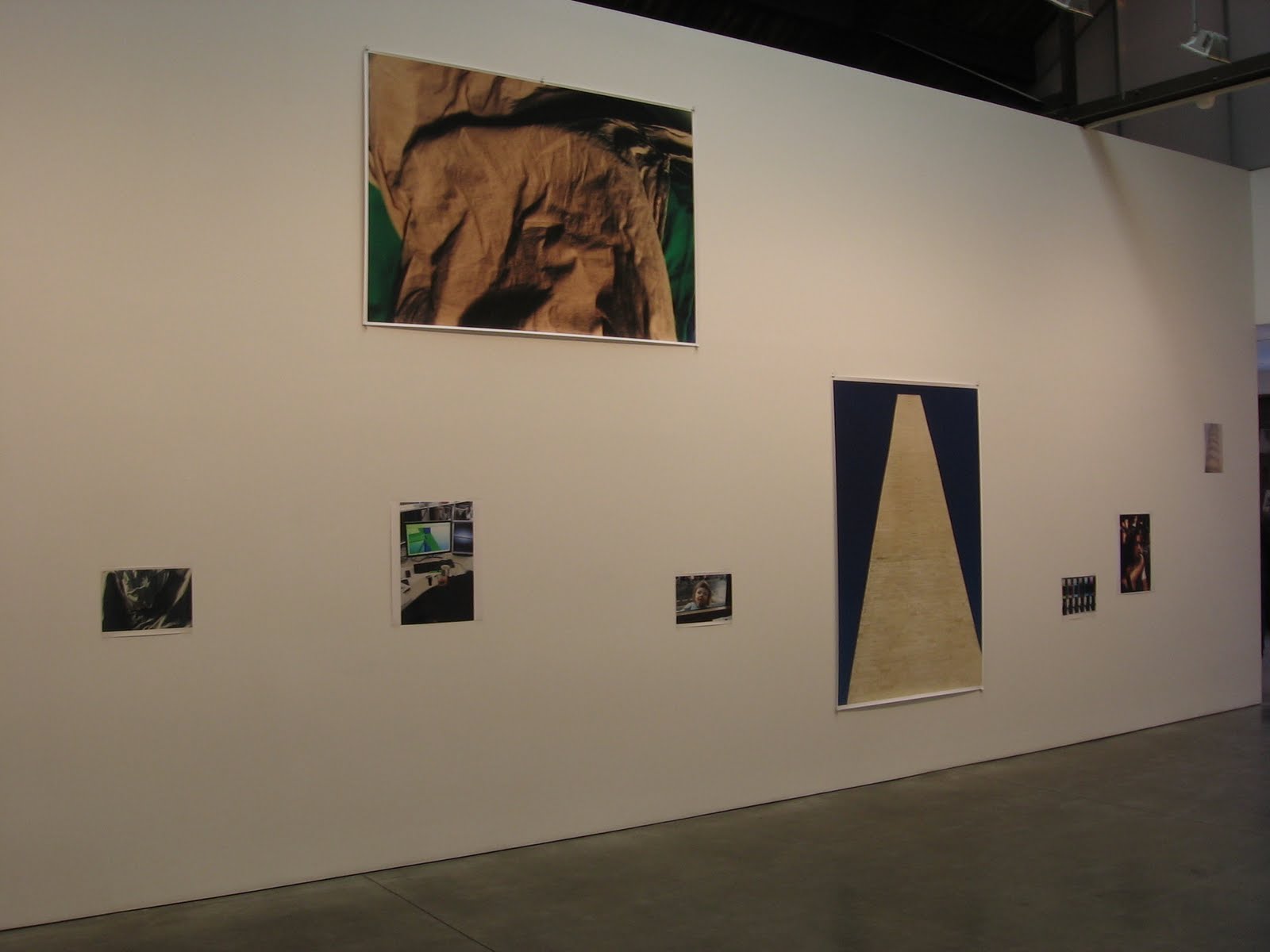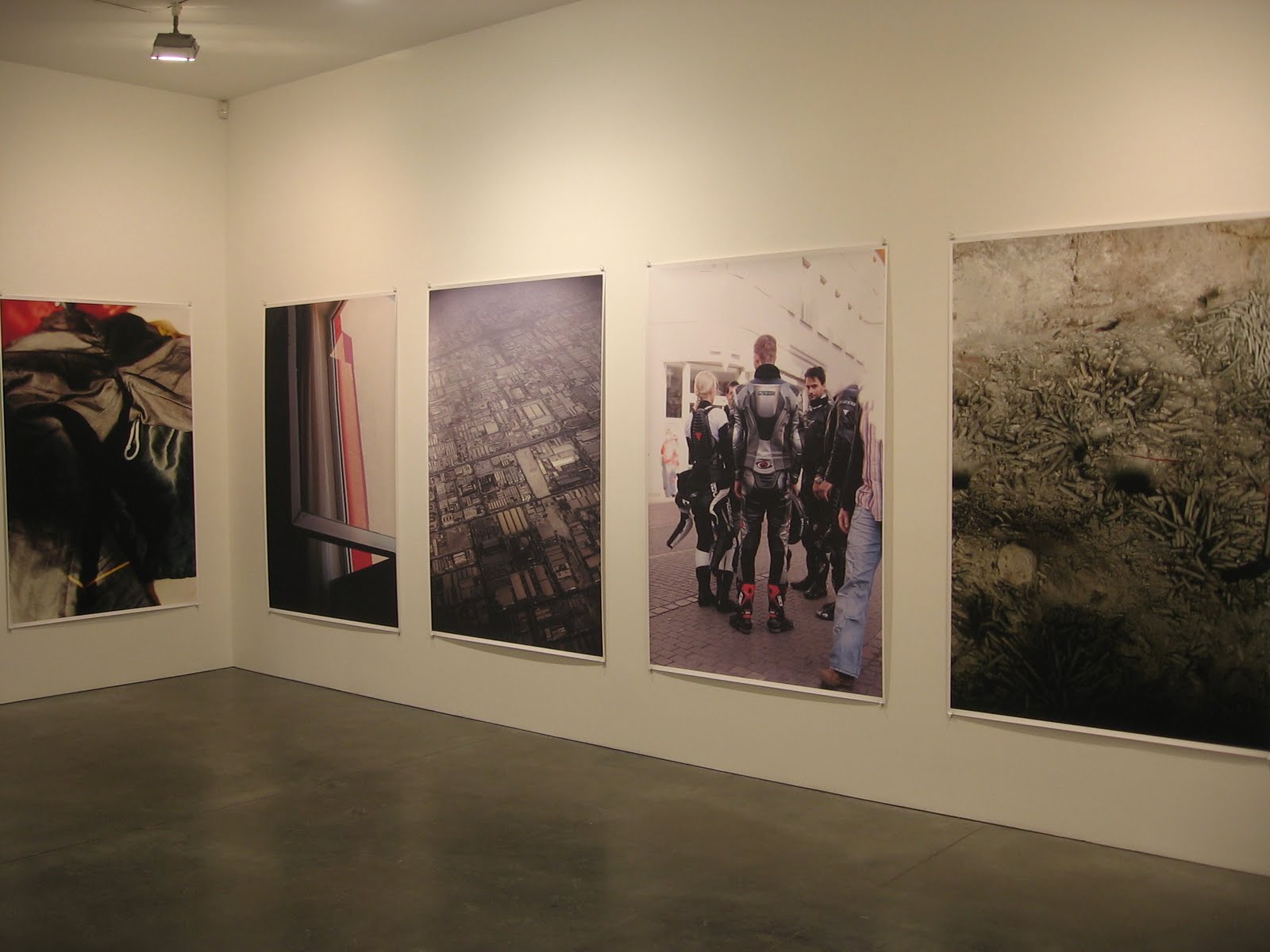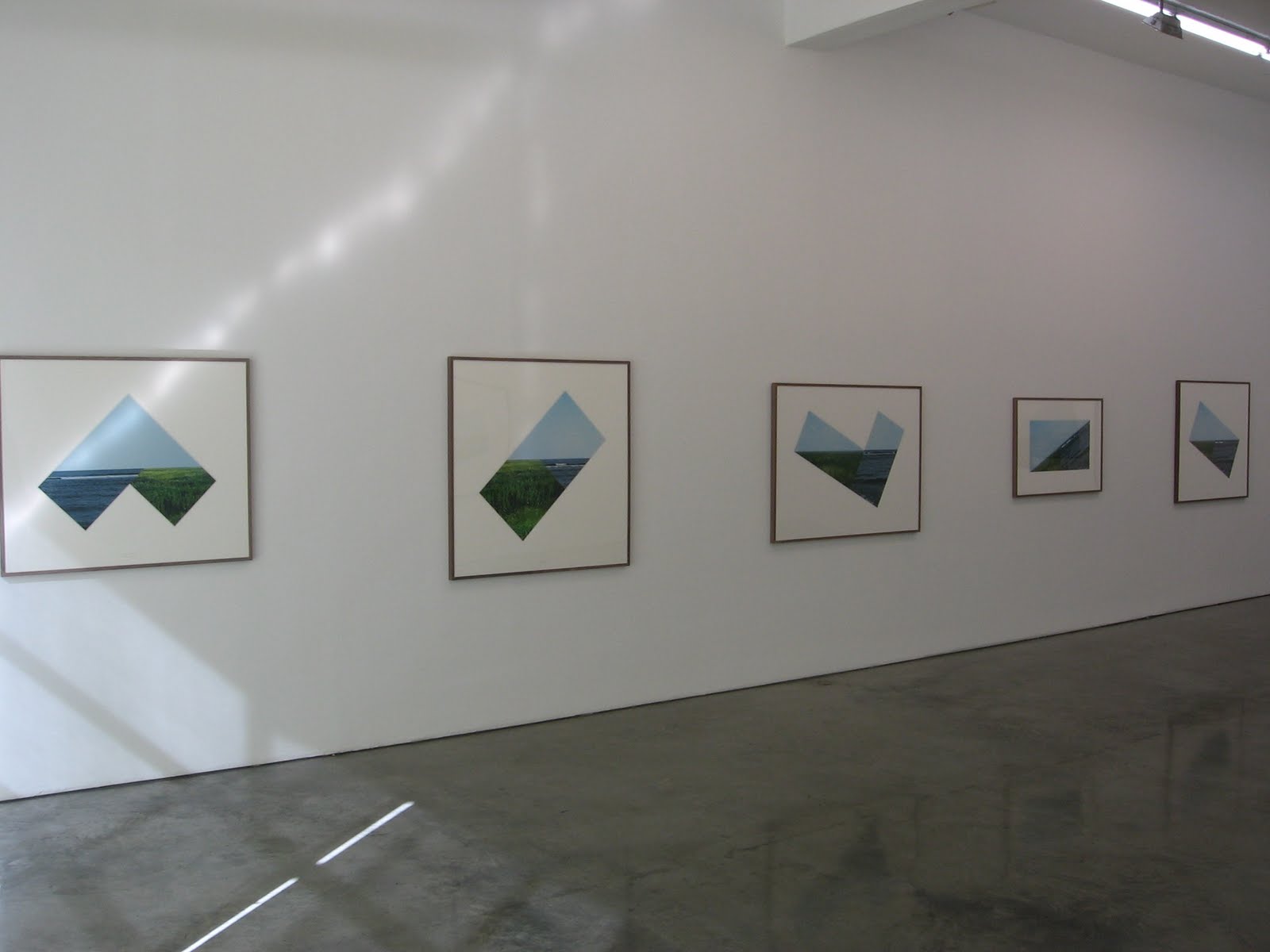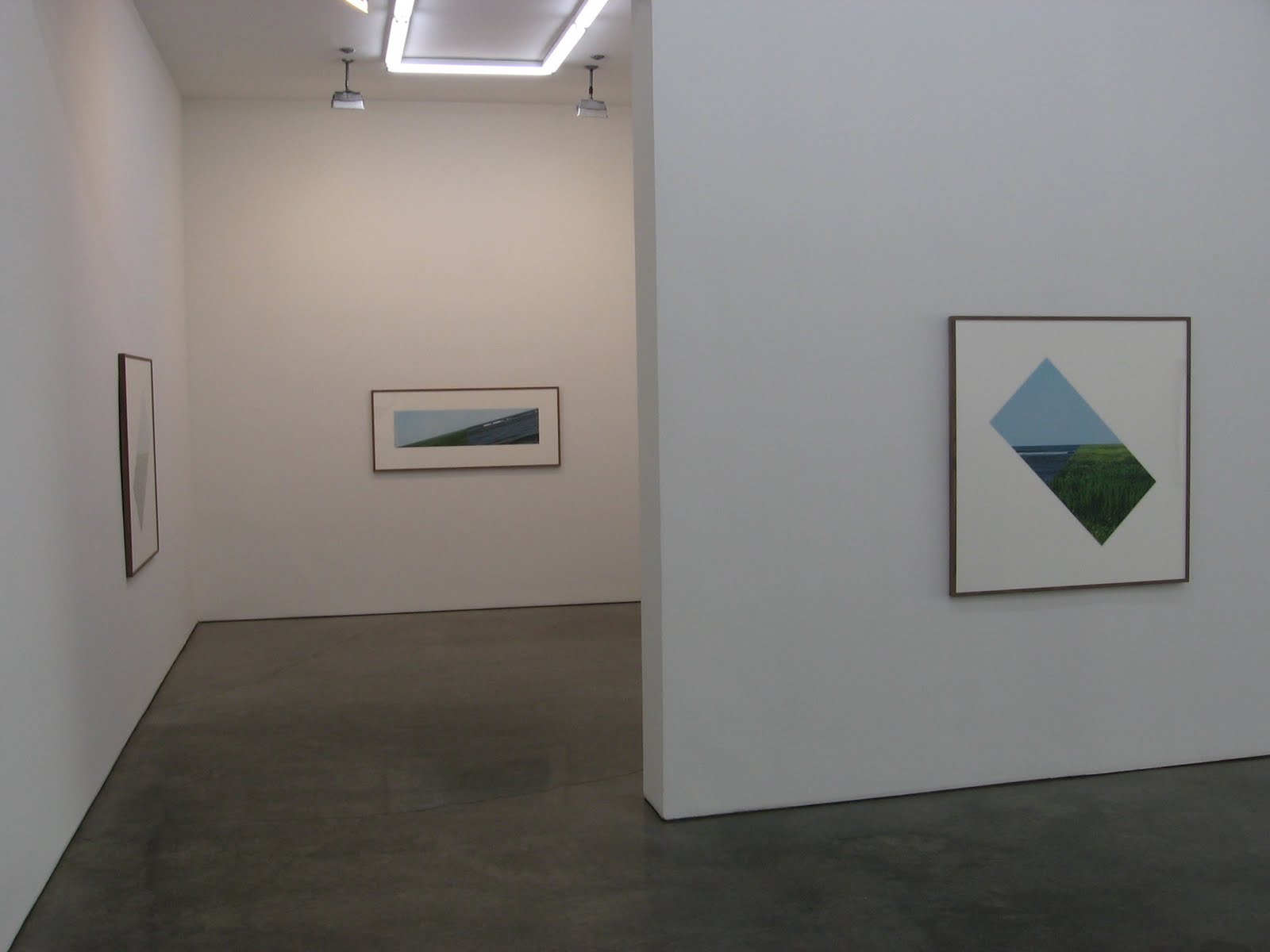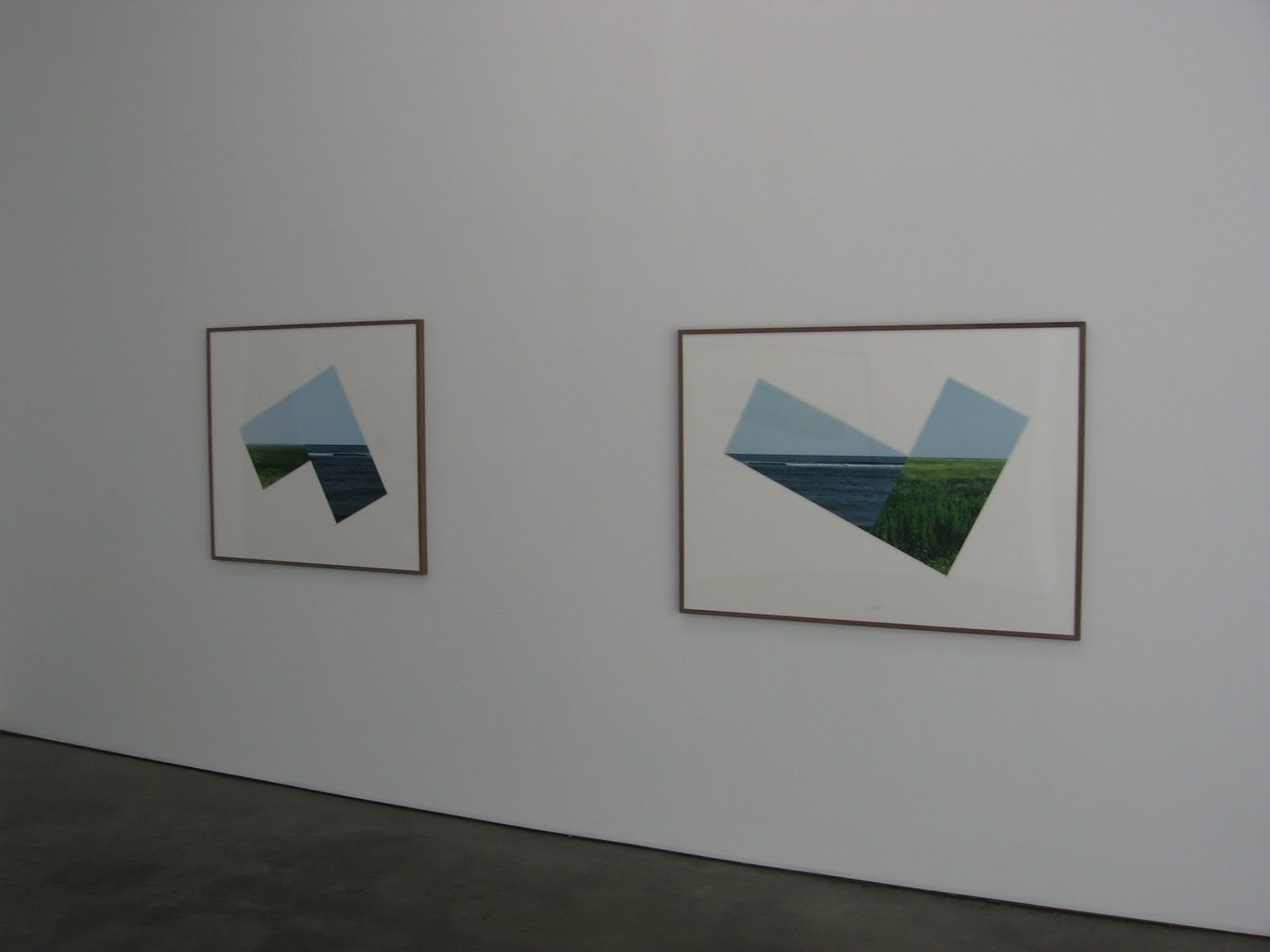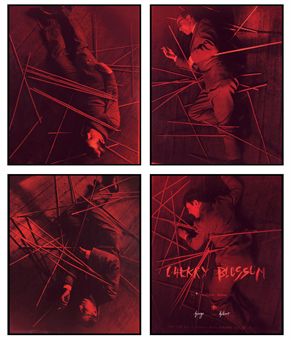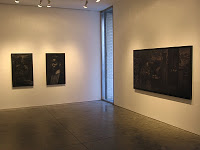 JTF (just the facts): A total of 21 color images and 2 videos, alternately framed in black or white with no mat, and hung the entry and three main rooms of the gallery. (Installation shots at right.) The works were all made in 2009 and are broken into three separate projects. The details for each are as follows:
JTF (just the facts): A total of 21 color images and 2 videos, alternately framed in black or white with no mat, and hung the entry and three main rooms of the gallery. (Installation shots at right.) The works were all made in 2009 and are broken into three separate projects. The details for each are as follows:
.
 Comments/Context: In the past decade, we have seen a flowering of photographic work that is overtly staged and constructed, where narratives have become more cinematic and controlled, far beyond the reaches of simple documentary truth. In his previous work, the Dutch photographer Erwin Olaf has used this style of picture making to create a wide variety of unsettling and tension filled scenes; regardless of the specifics of the scene he has set, there is always a sense of mystery and ambiguity, of not being able to entirely understand exactly what is going on. Anxiety, restlessness, agitation, and yearning are repeatedly mixed together into a potent cocktail of pregnant emotional overtones, sometimes amplified to the point of caricature.
Comments/Context: In the past decade, we have seen a flowering of photographic work that is overtly staged and constructed, where narratives have become more cinematic and controlled, far beyond the reaches of simple documentary truth. In his previous work, the Dutch photographer Erwin Olaf has used this style of picture making to create a wide variety of unsettling and tension filled scenes; regardless of the specifics of the scene he has set, there is always a sense of mystery and ambiguity, of not being able to entirely understand exactly what is going on. Anxiety, restlessness, agitation, and yearning are repeatedly mixed together into a potent cocktail of pregnant emotional overtones, sometimes amplified to the point of caricature..
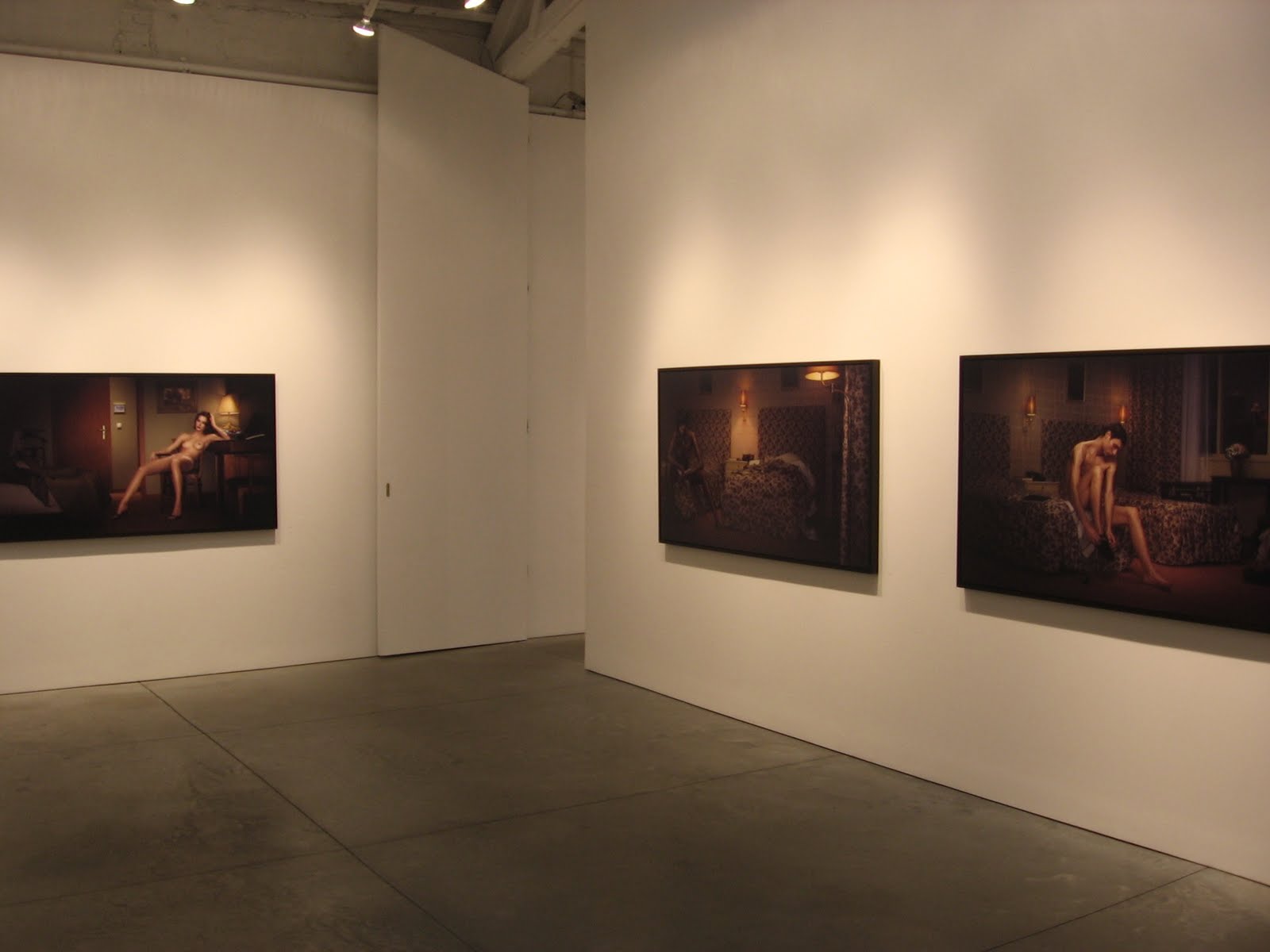 The Hotel series carries a heavier weight, dragged down by weary indifference, but is more successful in terms of creating a sustained sensibility. In these scenes, beautiful women (most nude or semi-clothed) are posed in timeless boring hotel rooms, languishing on tacky bedspreads or lounging on forgettable desk furniture. A few of the scenes have a stylized Helmut Newton feel, but most are full of monotony and apathy, the tedium of the dated noir setting dampening any eroticism that might have been present in the scantily clad tenants. Again, the images have Olaf’s signature tension, the clever mix of listlessness and uncertain anticipation.All of these images have a dreamy, almost airbrushed perfection to them; the narratives and characters have been formalized to the point of convention or ritual – they are no longer specific people or events, but generalized representations of something more abstract. Put in the context of his previous work (like the projects Grief or Hope), Olaf seems to be working his way down a long list of subtle human emotions, creating allegorical depictions of invisible feelings and conflicting moods that typically resist easy documentation. When he gets the disquiet just right, his works are the exact opposite of cool, unemotional contemporary photography; the images shimmer with stylized charged atmosphere, strong emotions teetering on the edge of breaking through the self-imposed restraint.
The Hotel series carries a heavier weight, dragged down by weary indifference, but is more successful in terms of creating a sustained sensibility. In these scenes, beautiful women (most nude or semi-clothed) are posed in timeless boring hotel rooms, languishing on tacky bedspreads or lounging on forgettable desk furniture. A few of the scenes have a stylized Helmut Newton feel, but most are full of monotony and apathy, the tedium of the dated noir setting dampening any eroticism that might have been present in the scantily clad tenants. Again, the images have Olaf’s signature tension, the clever mix of listlessness and uncertain anticipation.All of these images have a dreamy, almost airbrushed perfection to them; the narratives and characters have been formalized to the point of convention or ritual – they are no longer specific people or events, but generalized representations of something more abstract. Put in the context of his previous work (like the projects Grief or Hope), Olaf seems to be working his way down a long list of subtle human emotions, creating allegorical depictions of invisible feelings and conflicting moods that typically resist easy documentation. When he gets the disquiet just right, his works are the exact opposite of cool, unemotional contemporary photography; the images shimmer with stylized charged atmosphere, strong emotions teetering on the edge of breaking through the self-imposed restraint.
29×18 – $5500 to $12000
50x 31 – $8250 to $12750
Large interiors:
32×57 – $8250 to $14000
52×94 – $14000 to $21000
The Hotel images are priced as follows:
Portraits:
32×24 – $10250 to $13500
54×41 – $16250 to $21000
Wide rooms:
25×44 – $10250 to $13500
41×72 – $16250 to $21000
Rating: * (one star) GOOD (rating system described here)
Transit Hub:
- Artist site (here)
- Reviews: Style.com (here), New York (here), T Magazine blog (here), NY Times, 2006 (here)
Erwin Olaf, Hotel, Dawn & Dusk
Through March 20th
New York, NY 10011
